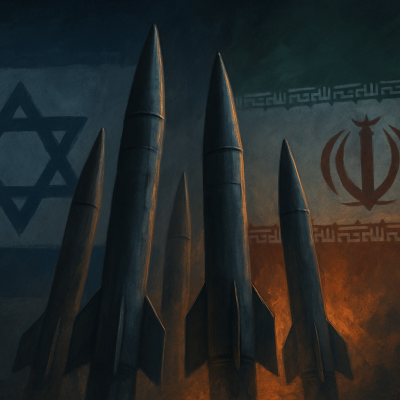Understanding the Complexities of Future Projections
As one endeavors to forecast farther into the future, the effectiveness of forecasting techniques diminishes. Forecasting entails estimating future events or conditions through a meticulous analysis of present data. Yet, envisioning the distant future transcends mere prediction of isolated occurrences; it necessitates grasping the intricate interplay between change and continuity. This complexity often leads future trajectories to deviate from current trends. Moreover, the rapid evolution of information volume, diversity, and speed, coupled with swift technological advancements, climate change, and the growing interconnectedness of global regions, exacerbates the inherent unpredictability of future outcomes.
Scenario planning is a strategic method for navigating long-term horizons, emphasizing the creation of resilient, adaptable, and innovative strategies. By envisioning multiple future scenarios and analyzing their potential impacts, this approach facilitates the exploration of various outcomes, typically two to five trajectories. It is essential for evaluating existing plans and policies, indicating which strategies may be more appropriate under different future conditions. Additionally, scenario planning aids in the development of new policies and strategic visions, while also identifying early warning signals of potential shifts towards specific scenarios.
Scenario Planning as a Strategic Tool
Scenario planning involves acknowledging diverse future possibilities without precise predictions. It uses a structured approach to outline potential futures, aiding in evaluating and creating strategies. This method is practical for decision-making, ensuring relevance to objectives. By framing actionable questions, scenario planning bridges theory and practice, offering a robust framework for addressing uncertainties. Widely embraced, it employs techniques like the 2×2 matrix method, which identifies key variables to create scenarios, aiding in assessing strategies across different future scenarios. To identify future-shaping factors, techniques such as trends impact analysis and horizon scanning are employed. The purpose of trend impact analysis is to identify ongoing trends that may have an impact on future developments. Conversely, horizon scanning detects emerging issues that could trigger significant changes. This systematic approach identifies subtle indicators and emerging patterns, assessing their potential to catalyze major shifts across various domains, including external, demographic, technological, or ideological areas.
Critiques of scenario development methods highlight several challenges, including the potential for pitfalls during their creation and the fact that different approaches may yield varying visions of the future. However, the latter concern can also be viewed as an advantage, as the essence of scenario planning is to encourage contemplation of a wide array of potential futures. Despite these criticisms, scenarios remain a vital and imaginative tool that fosters “interesting research”—research characterized by its novelty and propensity for generating insights. They expand the horizon of future considerations and act as safeguards against homogeneous thinking. While the creation of scenarios marks the initial phase of strategic planning, addressing the complexities of strategy formulation itself falls beyond the scope of this discussion.
In light of the critique of scenario development methods, it is important to recognize scenarios as a tool for facilitating structured discussion about future challenges. The OECD defines scenarios as hypothetical constructs, not predictive, but based on current and historical knowledge. While they do not claim to make exact predictions, they do offer a range of possible future developments.Also, diverse perspectives generate varying scenarios, which should be acknowledged. Attempting a neutral scenario incorporating every possible development isn’t practical due to its broad nature. Therefore, scenario scope and priorities must be clearly defined and shaped by specific viewpoints. For effective governmental use, four critical elements are necessary:identifying trends,evaluating their impact,determining responses, and executing strategies to enhance readiness for potential futures.
Envisioning the future isn’t just about predicting events but also understanding how future generations interpret them. Before exploring scenarios for the Middle East’s future, reflecting on past projections is enlightening.Foresight often falters when it fixates on anticipated upheaval, overlooking enduring threads of continuity. Take, for instance, the enduring stronghold of the U.S. dollar and persistent efforts to stem nuclear proliferation in the Middle East, amidst global flux. Equally vital is the recognition of counter-trends like the dual-edged impact of internet connectivity, empowering both dissent and authoritarian regimes. Perspectives on unfolding events are subject to evolution. What was once hailed as fruitful economic cooperation between the U.S. and China now faces reappraisal against shifting foreign policy paradigms.Further complexity arises from the fluctuating relevance of certain issues. Political Islam, once a formidable force recognized for its impact, has seen its global sway ebb and flow, intricately linked to national cohesion and the specter of conflict, including the surge of jihadist ideologies.
Critical Variables Shaping the Middle East’s Trajectory
Key trends identified as influential in the Middle East include
The transition from a unipolar to a bipolar or multipolar world order has significant implications for global and regional power dynamics. This shift is characterized by a reduced American military presence in the Middle East, the growing economic influence of China, and the resurgence of Russia as a key regional player. Concerns over nuclear armament and the proliferation of precision-guided weaponry are on the rise, exacerbated by the dissolution of arms control treaties, presenting strategic challenges.While the US remains unmatched in military power, more countries could pose significant challenges to US military actions, especially those possessing chemical, biological, or nuclear weapons. Additionally, the persistent terrorist threat, fueled by technological advancements, underscores the need for continued vigilance and preparedness against evolving threats. In the Middle East and Africa, heightened competition for dominance has led to shifting alliances, despite occasional cooperation based on shared interests. As Iran engages in proxy conflicts and has regional ambitions, it complicates the geopolitical landscape in countries like Syria, Iraq, and Lebanon. In addition to shaping regional dynamics, Turkey’s aggressive foreign policy and interventions in conflict zones such as Syria and Libya alter alliance and power balances within the region.Looking ahead, possible changes in some regimes and other significant shifts could reshape regional dynamics, adding layers of unpredictability to the Middle East’s future.
Sources:
Andrew Curry and Wendy Schultz. “Road Less Traveled: Different Methods, Different Futures.” Journal of Future Studies. May 2009.
https://jfsdigital.org/wp-content/uploads/2014/01/134-AE03.pdf
Edward de Bono. (1990). Parallel Thinking.
Jonas Svava Iversen. “Futures Thinking Methodologies — Options Relevant For ‘Schooling For Tomorrow.’” OECD. http://www. oecd.org/education/ceri/35393902.pdf
UNICEF. “Middle East and North Africa – Generation 2030.” UNICEF Data. Accessed March 27, 2024. Available at: https://data.unicef.org/resources/middle-east-north-africa-generation-2030/#:~:text=By%20mid%2Dcentury%2C%20271%20million,cycles%20of%20poverty%20and%20inequality.





